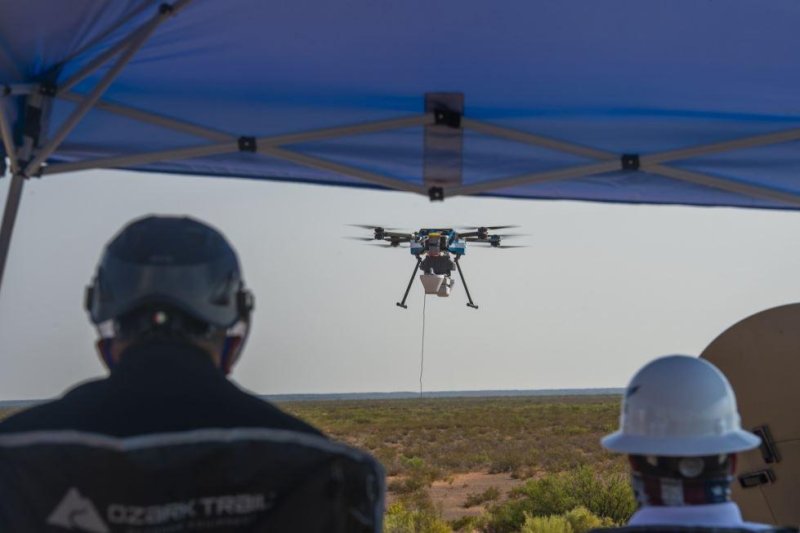A communications drone, an element of the U.S. Air Force Advanced Battle Management System, is tested at White Sands Missile Range, N.M., in August. Photo by Senior Airman Daniel Garcia/U.S. Air Force
Oct. 2 (UPI) -- A two-year collaboration agreement between the U.S. Army and U.S. Air Force was signed this week, calling for greater synchronization of warfighting assets.
Army Chief of Staff Gen. James C. McConville and Air Force Chief of Staff Gen. Charles Q. Brown, Jr. agreed to establish Combined Joint All-Domain Command and Control in a day-long meeting at the Pentagon, the Air Force said on Friday.
It was the first high-level discussion between the Army and Air Force discussion since Brown took on his new role in August.
The alliance will be led by the Army Futures Command and the Air Force A-5 office of strategy, integration and requirements.
It will link the Army's Project Convergence, which completed a five-week exercise in September to test artificial intelligence capabilities, with the Air Force and Space Force's Advanced Battlefield Management System.
Two weeks ago, the Air Force announced its second test of the ABMS, meant to streamline the collection, analysis and sharing of information so that joint forces can make decisions faster in the battlefield. The test featured the rapid detection and destruction of surrogate Russian cruise missiles.
In establishing CJADC2, McConville and Brown agreed to mutual standards for data sharing and service interfacing, regarded as the "basic levels" of collaboration, the Air Force said.
The cooperative relationship will be part of a "mesh network" which includes all six service branches, offering mutual access to data, reconnaissance and intelligence collected across joint networks.
"The core challenges of the future fight are speed and scale," said Lt. Gen. Charles Flynn, Army deputy chief of staff. "The future fight will be much faster, and the joint force will have more sensors and more shooters. It will be more widely distributed than ever before."















